Noise pollution, an invisible danger that affects both humans and wildlife, encompasses unwanted or disturbing sounds that impact health and well-being. From rustling leaves (20 to 30 decibels) to thunderclaps (120 decibels), sound varies widely. Exposure to noise exceeding 85 decibels can harm ears, leading to Noise-Induced Hearing Loss (NIHL). Like pollution from fuel tankering or environmental problems with supersonic aircraft like the Concorde, Aviation is highly responsible for contributing to noise pollution in, around, and beyond airports. But how is noise measured in airport? And what is the technology behind its reduction? We’ll dive into the answers behind these questions.
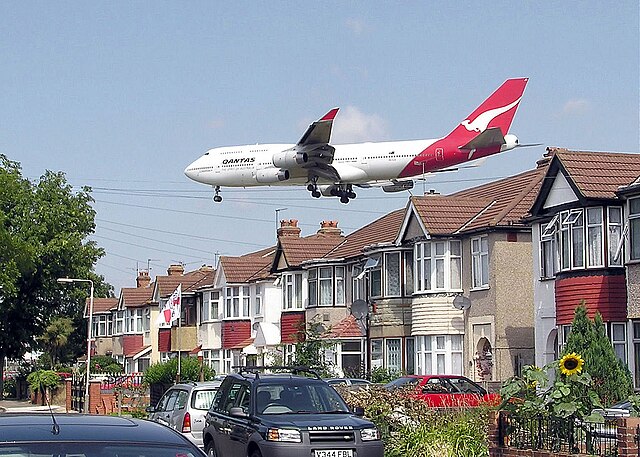
Aircraft noise is a significant concern related to the operation and expansion of airports worldwide. It remains the most common cause of adverse community reactions. Airports typically manage noise through various measures, including noise limits, flight path design over less populated areas, and sound insulation programs for affected homes. In Europe, approximately 3.2 million people live in areas exposed to sounds greater than 45 dB, with nearly 1 million experiencing daily movements at over 70 dB.
What are the main sources of aircraft noise?
So, where does all this aircraft noise come from? Let’s examine the specific sources that impact passengers and communities near airports.
Jet Engines: These marvels of engineering, while powerful, are also significant contributors to noise pollution. Early jet engines produced thrust by compressing, burning, and expelling a small amount of air. The velocity difference between exhaust air and atmospheric air created a shear layer, generating high-frequency noise. However, modern high-bypass ratio engines have found a way to reduce this noise, bypassing most core air and emitting significantly lower noise levels.
- Mechanical Noise: The rotation of engine parts, especially noticeable when fan blades reach supersonic speeds, contributes to mechanical noise.
- Aerodynamic Noise: Generated by airflow around the aircraft surfaces, particularly when flying low at high speeds.
- Aircraft Systems Noise: This includes the cockpit, cabin pressurization, conditioning systems, and Auxiliary Power Units (APUs).
The noise levels depend on factors like airport size, runway configuration, flight frequency, and community proximity.
Measuring and monitoring aircraft and airport noise.
Measuring and monitoring aircraft and airport noise involves several methods. Let’s delve into them.
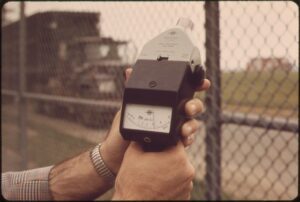
LAeq metric:
The LAeq (or Leq) metric describes sound levels that vary over time, resulting in a single decibel value that accounts for the total sound energy over a specific period. It involves recording noise from aircraft passing over a designated area within a 16-hour day and averaging daily levels to create an annual average.
A sound level meter captures noise levels at regular intervals (typically 16 times per second) throughout the measurement period. The meter uses A-weighting, which adjusts the measurements to match human perception of sound. This setting is built into all sound level meters. The meter converts the dB values to sound pressure levels, adds them up, and divides them by the number of samples. This average energy level is the Leq value.
LAeq provides a comprehensive representation of varying noise levels over time, making it useful for assessing environmental and workplace noise exposure.
Noise Contour Maps:
Noise contour maps play a crucial role in assessing and managing noise pollution around airports. These maps identify areas with significant noise pollution. They inform policy decisions, guide airport development, and aid in noise mitigation planning. By analyzing these contours, authorities can assess how many people live in noise-affected areas.
How Noise Contour Maps Work:
- Aircraft Noise Index (Leq): The contours depict constant values of the Leq (equivalent continuous noise level) index. Leq represents the average noise level over a specific period (usually 24 hours).
- Computer Modeling: Noise contours are generated using computer models validated with actual noise measurements. These models calculate noise emissions and propagation from arriving and departing air traffic.
- Contours: The maps display contour lines representing different Leq values. Areas within a contour line experience similar noise levels.
Talking about their application, in London, the Civil Aviation Authority (CAA) estimates noise exposures around airports like Heathrow, Gatwick, and Stansted. Also, noise contours help local authorities make informed decisions about land use, building regulations, and noise reduction measures. In summary, noise contour maps visually represent noise exposure, aiding in effective noise management.
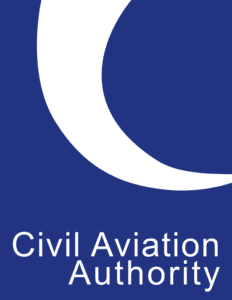
Noise Track Keeping (NTK):
The NTK system at airports (such as Heathrow, Gatwick, and Stansted) correlates air traffic control radar data (aircraft flight paths) with related noise measurements from ground-based noise monitors. By linking these two datasets, the NTK system helps identify which aircraft correspond to specific noise events. It ensures accurate tracking of flights and their associated noise impact.
Components and Workflow:
- Radar Data: Air traffic control radar provides real-time information on aircraft positions, including flight paths, altitudes, and speeds.
- Noise Monitors: Ground-based noise monitors capture noise levels at specific locations around the airport.
- Correlation: The NTK system matches radar data with noise measurements based on the aircraft’s position and time of flight.
- Database: The system maintains an aircraft operations database, associating each flight with noise data.
Applications:
- Noise Preferential Routes (NPR): The NTK system detects deviations from predefined Noise Preferential Routes (NPRs). These routes minimize the impact of noise on nearby communities during takeoff and landing.
- Anomaly Detection: If an aircraft strays from its expected flight path, the NTK system alerts authorities. This helps investigate irregularities and address noise complaints.
- Research and Analysis: Aviation authorities and environmental departments use NTK data for noise studies, policy decisions, and community engagement.
Lden Metric:
Lden (Day-Evening-Night Level) represents the average noise level over a 24-hour period, considering different time segments:
- Day: 8 hours (typically 7:00 AM to 3:00 PM)
- Evening: 4 hours (3:00 PM to 7:00 PM) with an additional 5 dB penalty
- Night: 8 hours (11:00 PM to 7:00 AM) with an additional 10 dB penalty
It’s based on the energy equivalent noise level (Leq) with the specified penalties. The World Health Organization (WHO) and the European Commission use Lden to assess cumulative noise exposure.
‘N’ Metric:
Purpose: The ‘N’ metric measures the number of aircraft passing over a location above a given decibel level.
Example: N60 indicates the number of planes over 60 decibels flying over a home during a specific period.
Application: Useful for understanding the frequency of noise events exceeding a certain threshold.
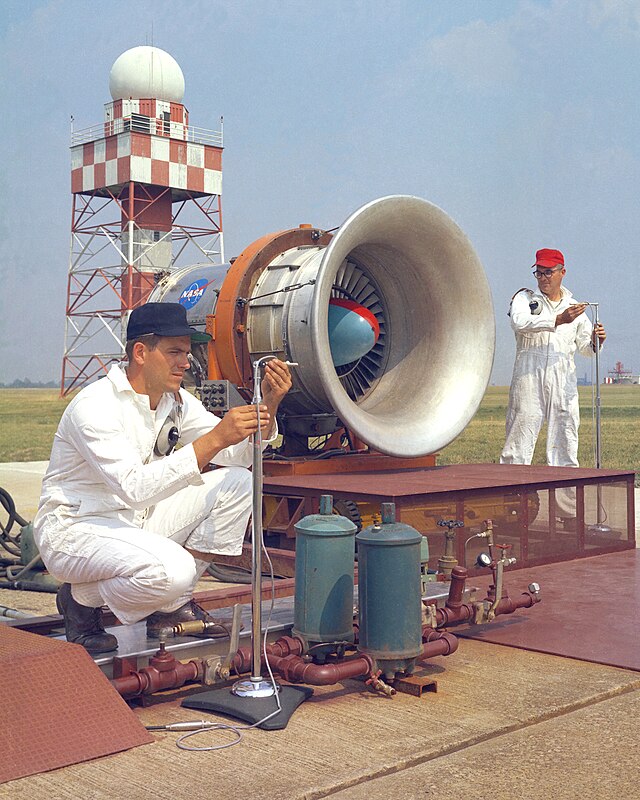
For intermittently overflown areas (e.g., due to specific wind conditions), a single-mode contour captures noise impact only during those specific days. Combining different metrics (averages and ‘N’) provides a comprehensive view of noise annoyance.
How do airports address noise management?
Airports employ a multifaceted approach to managing noise, considering both technological advancements and community engagement. Here are the key strategies:
- Technology: Airports focus on reducing noise at the source, particularly engine sounds. Modern aircraft, like the Airbus A320neo, produce significantly less noise compared to previous generations.
- Land Planning and Management: Airports work with local authorities to effectively plan land use. This includes zoning regulations to minimize noise impact on nearby communities.
- Operational Procedures: Airports implement noise abatement procedures during takeoff and landing. These procedures optimize flight paths and reduce noise exposure for residents.
- Operation Restrictions: Some airports limit night operations to reduce noise levels. However, community satisfaction with these restrictions varies.
Additionally, communication and engagement initiatives play a crucial role. Compensation and sound insulation programs help address noise-related concerns in affected communities.

A look at the steps taken to reduce aircraft and airport noise.
Here are some specific noise abatement procedures commonly used by airports:
Modern Engine Design:
High Bypass Ratio Engines bypass most of the air around the core, reducing the velocity difference between expelled air and still air. Consequently, noise levels are significantly lower than those of older engines. Noise-absorbing materials are used to make special linings around the engine intake and critical areas (turbines and compressors) that absorb noise.
Aerodynamic Improvements:
A “clean” configuration refers to an aircraft design that minimizes drag and turbulence by streamlining its shape.
- Key aspects of a clean configuration include:
- Smooth Surfaces: Aircraft surfaces (wings, fuselage, and tail) are free from protrusions, gaps, or unnecessary features. This reduces air resistance during flight.
- Retractable Landing Gear: Retracting the landing gear (folded into the aircraft) significantly reduces drag.
- Closed Flaps and Slats: During the cruise, flaps, and slats (used for takeoff and landing) are retracted to create a cleaner wing profile.
- Flush-Mounted Components: Antennas, sensors, and other components are integrated seamlessly into the aircraft’s skin.
Keeping the aircraft in a streamlined shape minimizes airframe noise during flight.
During landing approaches, pilots follow specific procedures to minimize noise impact.
Pilots maintain a higher altitude during the approach phase, reducing the proximity to the ground and minimizing noise exposure to nearby communities. Pilots reduce engine thrust to the minimum required for safe descent. Lower power settings result in quieter engines.
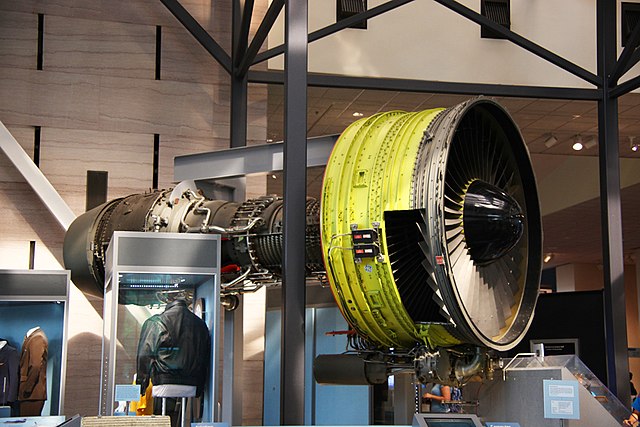
Operational Procedures:
- Reduced Thrust Takeoff: Pilots use less thrust during takeoff to decrease engine noise.
- Continuous Descent Approaches (CDA) allow aircraft to follow a smooth descent path during landing, minimizing power changes and noise.
- Preferred Runway Use: Designated runways concentrate noise away from populated areas.
- Curfew Hours: Some airports restrict night operations to reduce noise impact.
Land Use Planning and Management:
Effective land planning ensures airports are situated away from residential areas. Physical structures like noise barriers and berms block noise from reaching nearby airports.
Community Engagement and Compensation:
- Sound Insulation Programs: Residents near airports receive insulation to mitigate noise impact.
- Collaboration with local communities: Engaging with affected residents helps address concerns.
How do noise-reducing technologies impact fuel efficiency?
Noise-reducing technologies can indeed impact fuel efficiency.
Streamlined airframes and wing designs reduce drag, which directly affects fuel consumption. Aircraft and vehicles can achieve better fuel efficiency by minimizing turbulence and optimizing airflow.
Fuel-efficient engines often incorporate noise-reducing features. These include:
- Direct Fuel Injection: Precise fuel delivery improves combustion efficiency, reducing noise and enhancing fuel economy.
- Turbocharging: Turbochargers increase engine power without significantly impacting noise levels. Efficient power generation leads to better fuel utilization.
- Variable Valve Timing: Optimizing valve opening and closing timing enhances performance while minimizing noise.
Smaller engines with turbochargers are inherently quieter and provide more space for noise encapsulation. Downsizing engines contributes to noise reduction and improved fuel efficiency.
Noise reduction technologies can positively impact fuel efficiency by optimizing aerodynamics, enhancing engine design, and using noise-absorbing materials. These advancements align with environmental goals and the need for sustainable transportation.
Some of the recent innovations in quiet aircraft designs.
Let’s explore some of the latest developments in quiet aircraft design:
NASA’s X-59 Quesst:
NASA’s X-59, also known as the “Quiet SuperSonic Technology” (Quesst), is a groundbreaking experimental aircraft designed to break the sound barrier without the typical sonic booms.
The X-59 aims to revolutionize supersonic flight by reintroducing commercial airplanes capable of exceeding the speed of sound while minimizing noise impact.
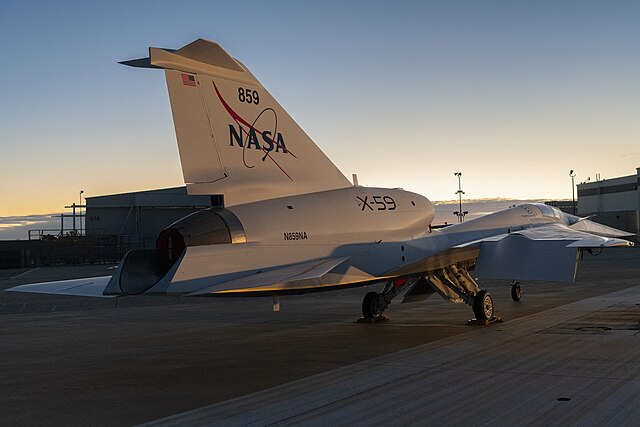
Experimental Wing Design:
NASA’s Langley Research Center researchers tested an experimental leading-edge wing design in late January 2021. The goal was to reduce noise caused by aircraft, emphasizing advancements in aerodynamics and acoustic performance.
UK Aerospace Initiatives:
UK aerospace companies are working on 140 technology projects worth £700 million. Their target is to reduce aircraft noise by 65% by 2050.
These developments focus on quieter supersonic flight, improved wing designs, and collaborative efforts to minimize noise impact.
Steeper approaches for reducing noise.
Steeper approaches are a noise abatement technique used by airports to minimize aircraft noise exposure to residential areas during landings. The idea behind steeper approaches is to increase the glide path angle of aircraft during their descent. By doing so, the aircraft stays higher above the ground for a longer distance, reducing noise impact on the ground. Here are some of the real-time examples:
Frankfurt Airport Example
- Frankfurt Airport introduced a 3.2° approach angle for its new fourth runway.
- This slightly steeper angle reduces landing noise by up to 1 dB, which translates to a 10% reduction in the landing noise footprint area.
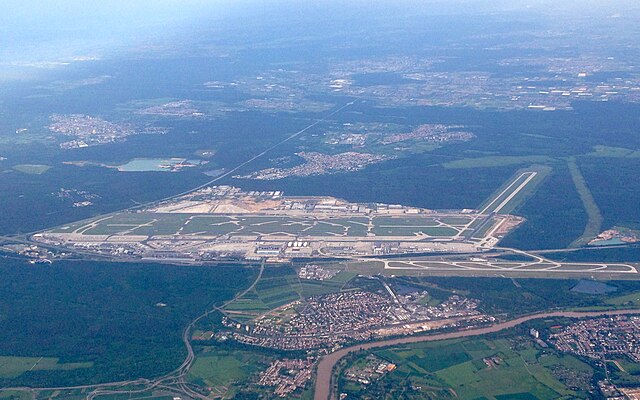
Heathrow’s Trial
- Heathrow Airport in the UK began trialing steeper approaches (up to 3.2°) in September 2015.
- If successful, Heathrow would be the only UK airport using steeper approaches to reduce noise on the ground.
Along with other quieter operating procedures and incentives for quieter aircraft, steeper approaches contribute to noise reduction.
Airport curfews to reduce nighttime noise.
Night flying restrictions or night-time curfews are regulations imposed by governing bodies to limit ground-perceived exposure to aircraft noise pollution during night hours when most residents are trying to sleep. Here are some ways airports achieve this:
- Scheduled Curfews: Airports establish specific time windows during which no flights can operate. For instance, at the UK’s Heathrow, Gatwick, and Stansted airports,
night flights are restricted between certain hours. These curfews help reduce noise during sensitive times.
- QC-Rated Aircraft Restrictions: Some airports categorize aircraft based on their noise levels. For instance:
- QC4-rated aircraft cannot be scheduled to operate at certain airports between 23:30 and 06:00.
- QC8 and QC16 planes have a longer window and can’t be scheduled between 23:00 and 07:003.
- Noise Abatement Procedures: Pilots follow specific procedures during takeoff and landing to minimize noise impact. These include steeper climb angles, reduced thrust, and avoiding residential areas.
- Community Engagement: Airports work closely with local communities to address concerns. They may invest in noise insulation for nearby homes or provide information about flight paths and noise patterns.
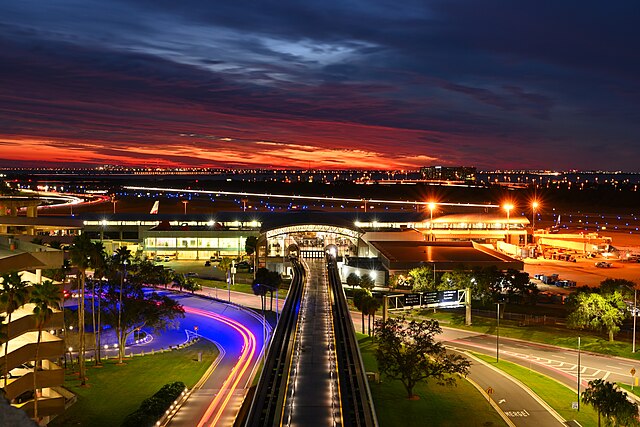
A look at the legal noise limits for airports.
Airport noise limits vary by jurisdiction and are influenced by factors such as time of day, aircraft type, and proximity to residential areas. Here are some key points:
| Factors | Details |
| Daytime vs. Nighttime Limits |
|
| WHO Guidelines: |
|
| CAA’s Role in the UK |
|
Specific limits can vary based on local regulations and airport characteristics.
Potential Penalties for exceeding noise limits.
Penalties for exceeding airport noise limits vary depending on the airport and local regulations. Here are some examples:
London City Airport: It has a scheme of incentives and penalties based on departure noise levels. The penalty limits are the most stringent of any UK airport for daytime operations.
Ealing Council (UK): Infringements of noise limits incur fines ranging from £500 to £1,000.
Heathrow Airport: The government sets noise limits for departing aircraft. Airlines are fined if an aircraft exceeds the allowed noise level.
Penalties can vary based on the airport and local policies.
Conclusion
Much like acoustic fencing sprang into existence after we learned about the pollution produced by Concorde, the aviation community is working hard to counter the effects of noise pollution aircraft produce. Penalties can help but they would be more effective if the aircraft manufacturers themselves work in noise reduction.
